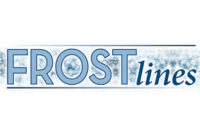The U.S. Department of Energy (DOE) has published a new final rule codifying test procedures for refrigerated bottled or canned beverage vending machines. The rule includes amendments that update the referenced test method to ANSI/ASHRAE Standard 32.1-2010, Methods of Testing for Rating Refrigerated Vending Machines for Sealed Beverages, eliminate the requirement to test at the 90°F (32°C) ambient test condition, establish a provision for testing at the lowest application product temperature, and adopt several amendments and clarifications to the DOE test procedure to improve the repeatability and remove ambiguity from the current test procedure.
The rule was published in the Federal Register on July 31.
On Aug. 11, 2014, the DOE issued a notice of proposed rulemaking (NOPR) to amend the test procedure for refrigerated bottled or canned beverage vending machines (beverage vending machines or BVMs). That proposed rulemaking serves as the basis for the final rule. In this final rule, DOE is reorganizing its test procedure for beverage vending machines into an Appendix A, which will be mandatory for equipment testing beginning 180 days after publication of the final rule, and an Appendix B, which will be mandatory for equipment testing to demonstrate compliance with any amended energy conservation standards arising out of DOE’s ongoing BVM energy conservation standards rulemaking.
In addition to the provisions listed above, the rule incorporates provisions to account for the impact of low power modes on measured daily energy consumption, as well as several clarifications regarding the certification and reporting requirements for beverage vending machines.
In eliminating the 90°F test procedure, DOE said, “DOE understands that the 90°F test is used primarily to represent and evaluate the performance of some units that may be installed outdoors, especially in hot-humid locations; however, the performance of a beverage vending machine at the 90°F ambient test condition is not currently used for DOE regulatory purposes. Therefore, DOE does not see a need to maintain the 90°F test condition as part of the DOE test procedure.”
DOE added that it believes removing the 90°F ambient test condition test requirement will also reduce manufacturer burden associated with its test procedure by eliminating testing that does not significantly increase the accuracy or representativeness of the DOE test procedure, and is unnecessary for demonstrating compliance with DOE's energy conservation standards.
For more information, contact Ashley Armstrong, U.S. Department of Energy, Office of Energy Efficiency and Renewable Energy, Building Technologies Office, at 202-586-6590 or e-mail refrigerated_beverage_vending_machines@ee.doe.gov.



